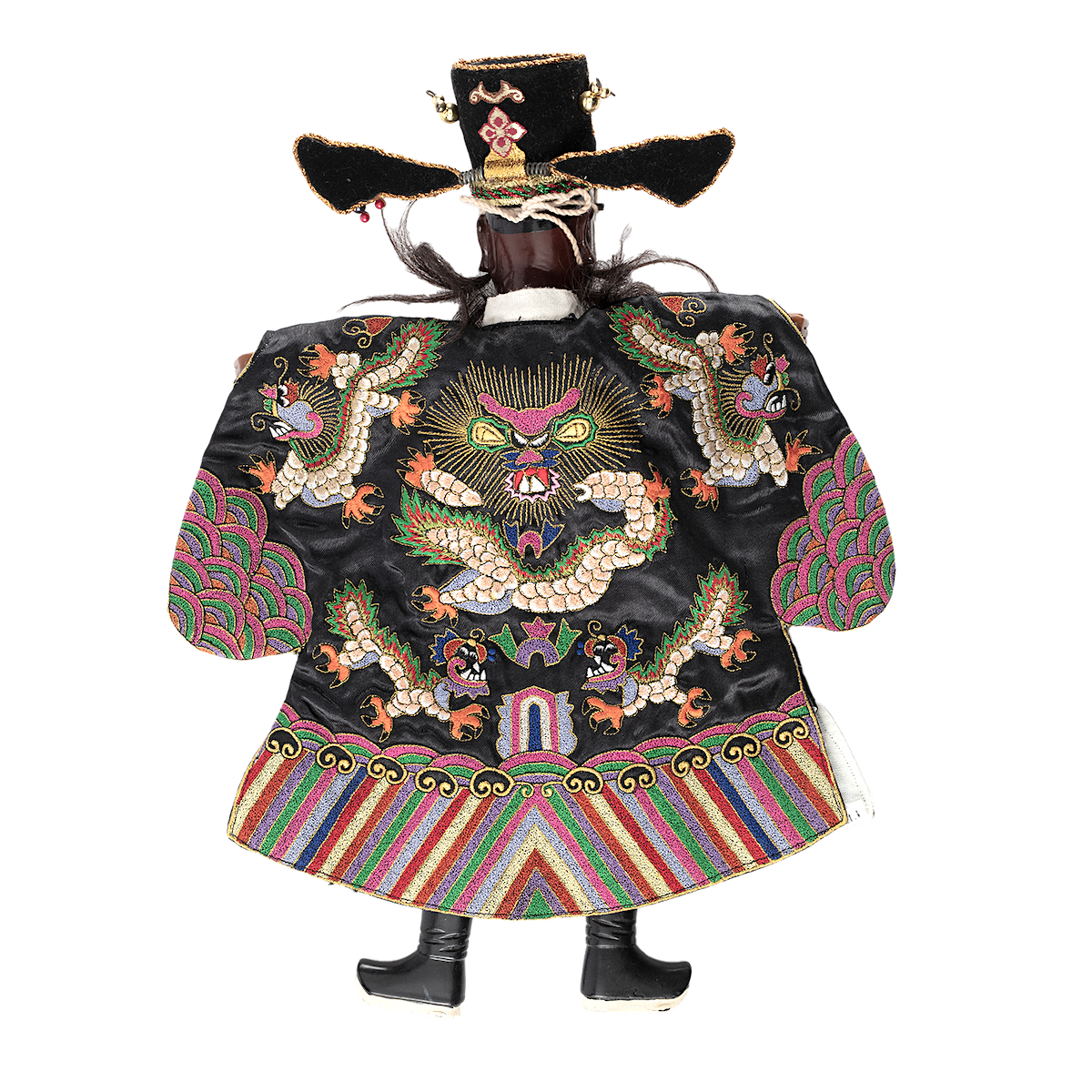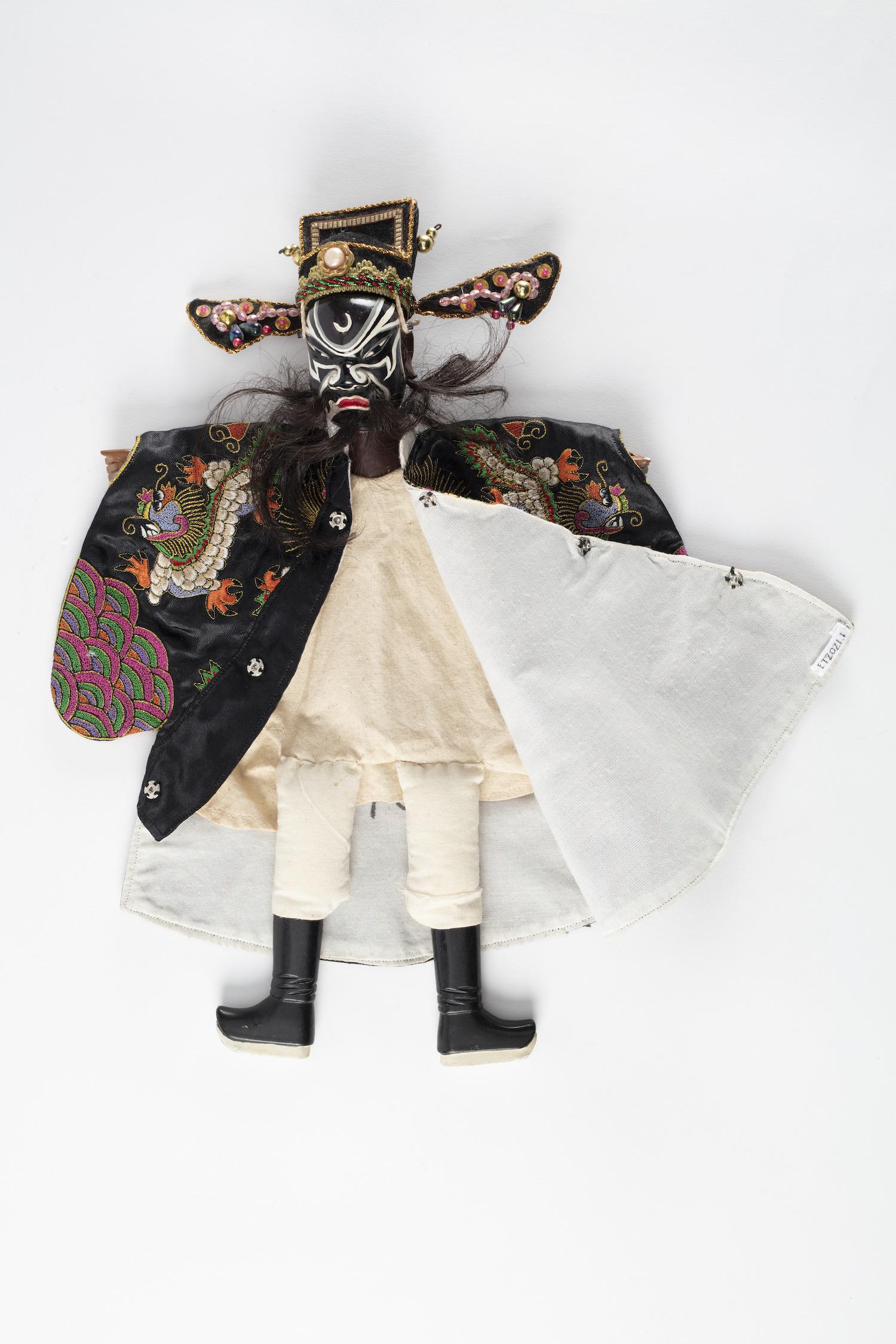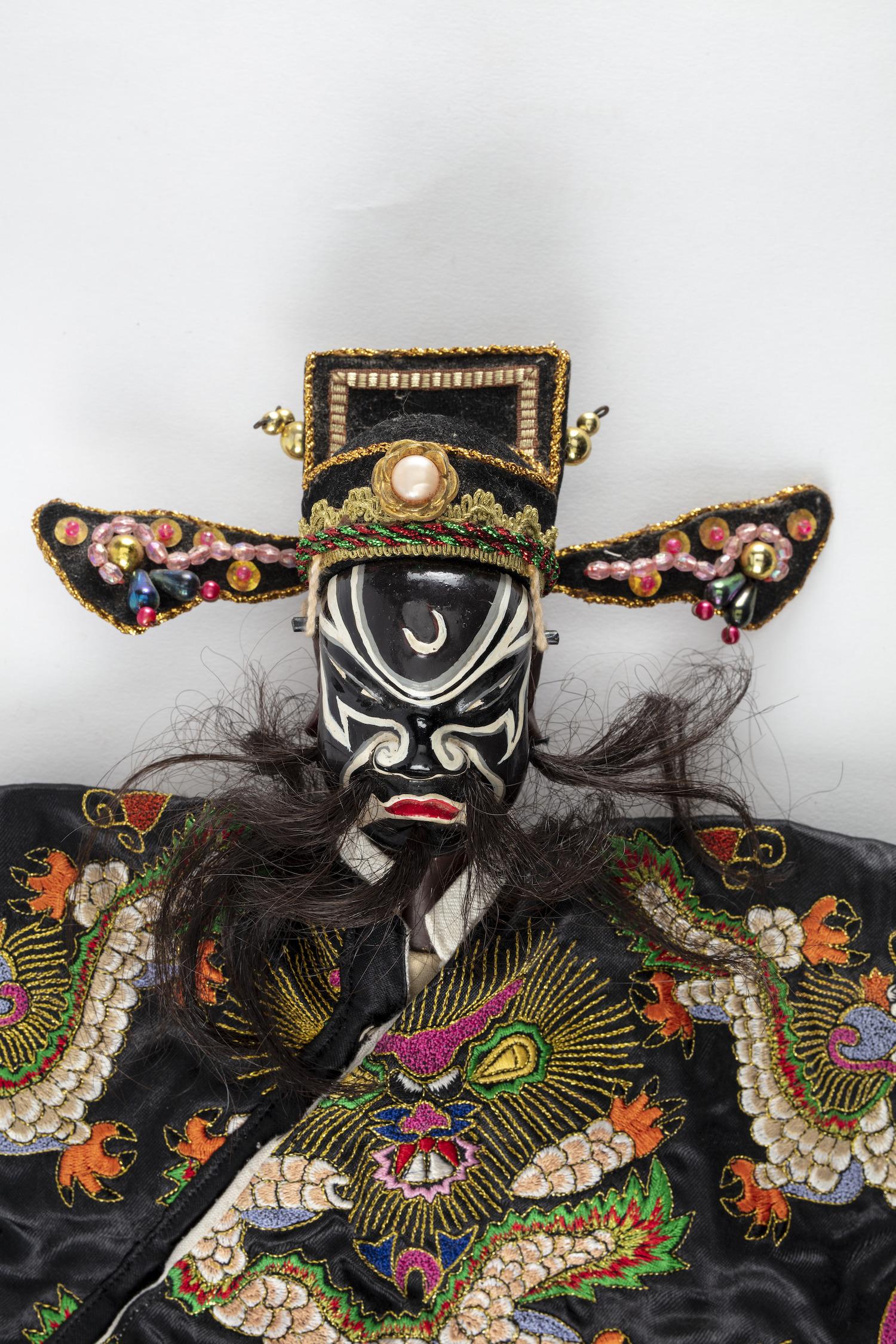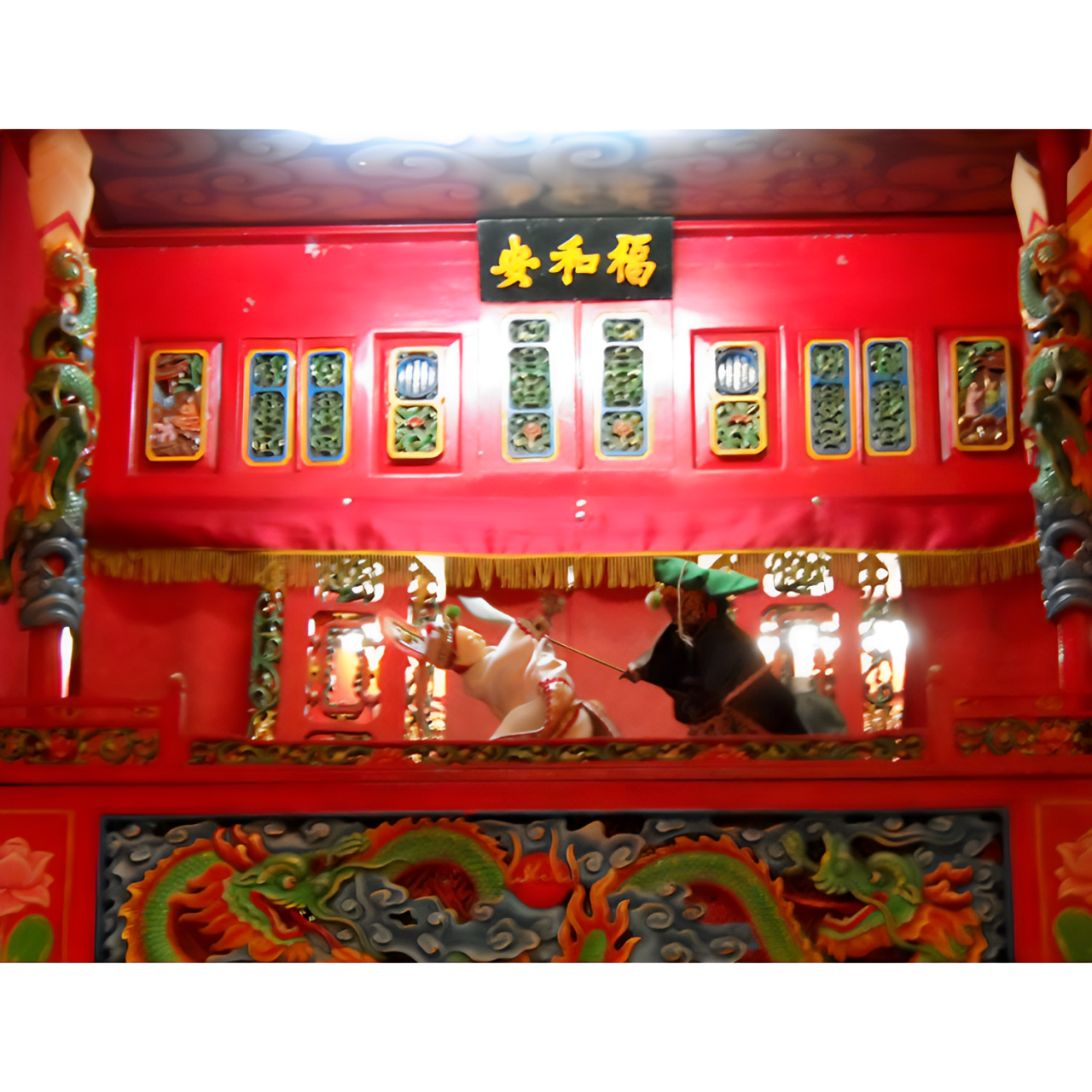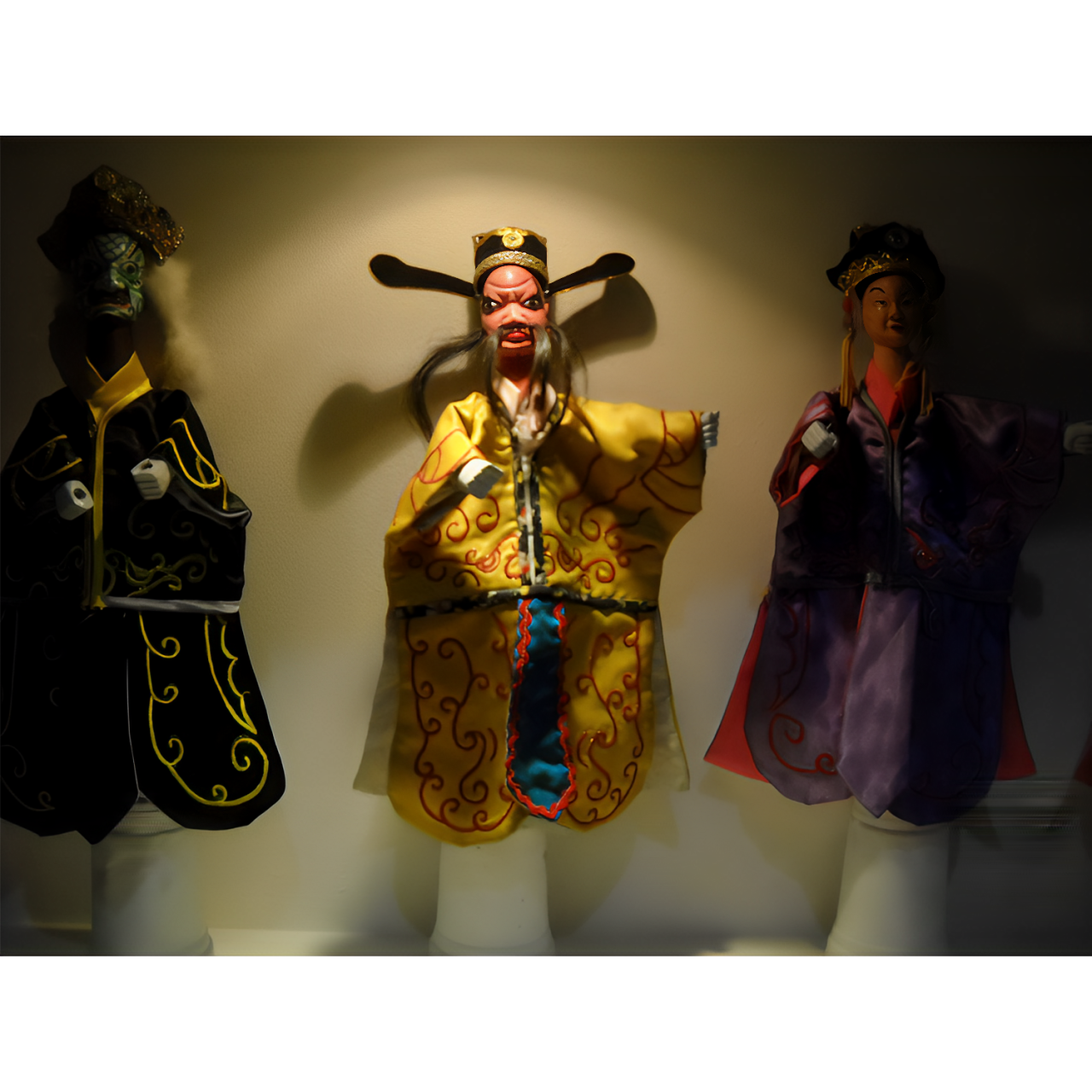Wayang Potehi Glove Puppet
Paguyuban Wayang Potehi Fu He An, Circa early 20th century
Chau Chak Wing Museum, University of Sydney
Wayang potehi is a traditional performance that was brought to Java, Indonesia by Chinese immigrants from its southern regions (Fujian origin) around the 17th century. Usually performed in temples as part of religious observance, it serves social and ritual functions besides entertainment.
Unlike local forms of puppet theatre such as wayang kulit and wayang golek, which enact stories and characters from narratives from Indian and local traditions, wayang potehi features Chinese classical narratives and characters, often retold through Javanese puppeteers and musicians.
The specifically Javanese form of wayang potehi has been influenced by the socio-political history of Indonesia: from the period of Dutch colonialism, through Independence struggles, the Suharto regime, and into the modern era. In Java, the puppets are made by artisans of troupes affiliated with specific temple complexes. This puppet comes from the Fu He An temple Troupe, Gudo, Java.
Catalogue Number: Macleay Collections, ET.2021.1. donated by Dr. Josh Stenberg at the request of the Hok Ho An (Fu He An) troupe 2021
Material: Mixed media object - wood (Hibiscus tiliaceus), embroidered silk, hair, paint, glue
Dimensions: Height 37 cm, Length 28.5 cm, Depth 6 cm


